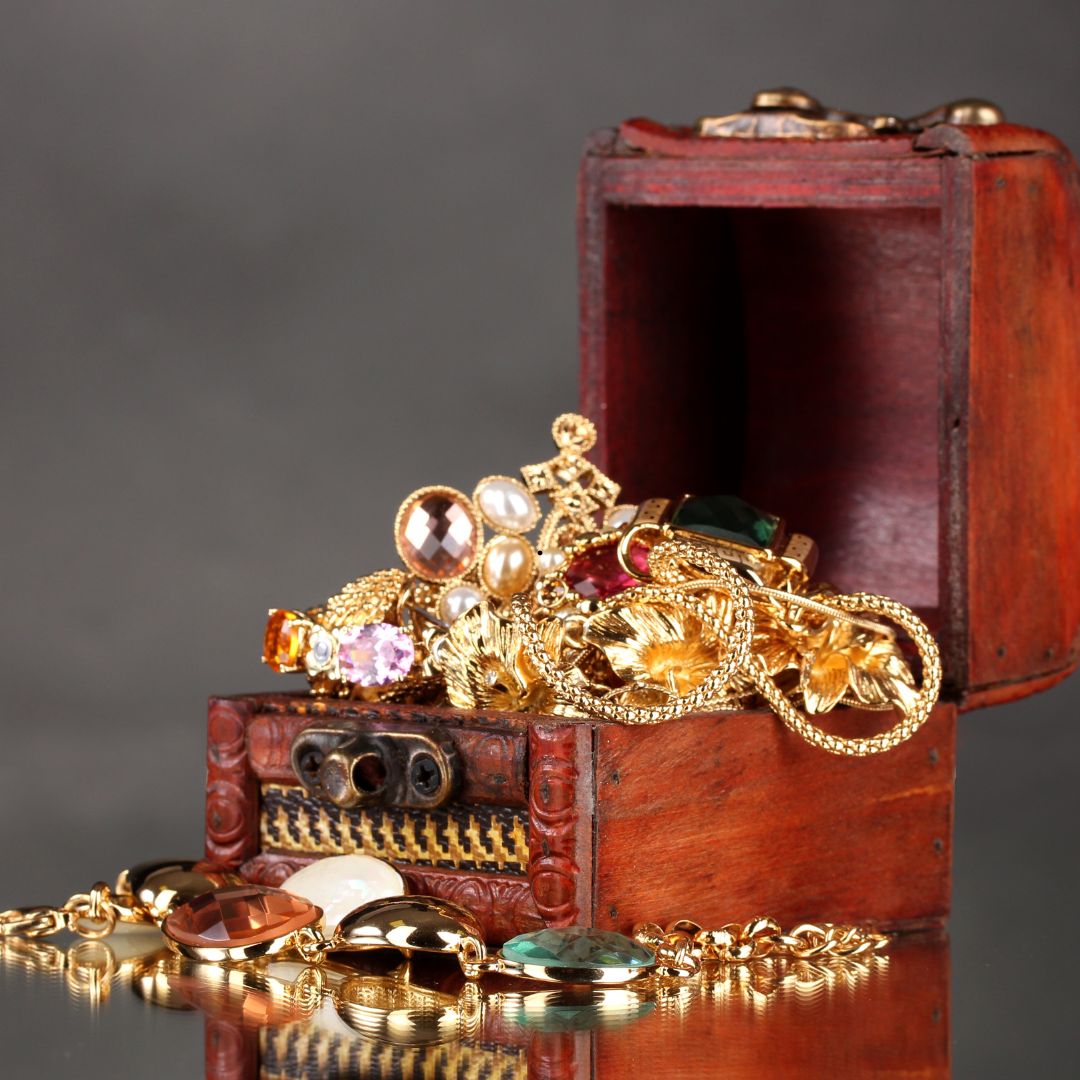
The Difference Between 14K, 18K, and 24K Gold
Gold jewelry is a timeless symbol of elegance, wealth, and personal expression. For collectors and investors, understanding the nuances of gold purity—specifically 14K, 18K, and 24K gold—is essential when selecting pieces that balance beauty, durability, and value. Each karat level represents a different composition of gold and alloyed metals, influencing the jewelry’s appearance, strength, and investment potential. This guide explores the differences between 14K, 18K, and 24K gold, helping you make an informed choice based on your needs and preferences.
Understanding Gold Karats

The term "karat" (K) measures the purity of gold in jewelry, indicating the proportion of pure gold to alloyed metals in a 24-part scale. Pure gold is 24K, meaning it contains 100% gold (or 99.9% in practical terms due to minor impurities). Lower karat levels, such as 14K or 18K, indicate a mix of gold with other metals like copper, silver, or zinc to enhance durability or alter color.
-
24K Gold: 99.9% pure gold (24/24 parts gold).
-
18K Gold: 75% pure gold (18/24 parts gold, 25% alloys).
-
14K Gold: 58.3% pure gold (14/24 parts gold, 41.7% alloys).
The choice between these karat levels depends on factors like intended use, aesthetic preferences, budget, and investment goals. Let’s delve into the characteristics of each.
24K Gold: The Pinnacle of Purity
Characteristics
24K gold is nearly pure gold, boasting a rich, warm yellow hue that epitomizes luxury. Its high purity makes it the softest and most malleable of the three, with a buttery texture that can be shaped into intricate designs. However, this softness also makes 24K gold prone to scratches, dents, and bending, limiting its practicality for everyday wear.
Advantages
-
Investment Value: 24K gold is closest to the market value of pure gold, making it a preferred choice for investors. Gold bars, coins, or high-value jewelry pieces are often crafted in 24K to maximize intrinsic worth.
-
Hypoallergenic: With minimal alloys, 24K gold is less likely to cause allergic reactions, ideal for those with sensitive skin.
-
Cultural Significance: In many cultures, particularly in South Asia and the Middle East, 24K gold is prized for bridal jewelry and ceremonial pieces due to its purity and symbolic value.
Disadvantages
-
Fragility: Its softness means 24K gold jewelry can easily scratch or deform, making it unsuitable for daily wear or pieces like rings that endure frequent handling.
-
Limited Versatility: The intense yellow color may not suit all design preferences or skin tones, and it’s rarely used for gemstone settings due to its lack of structural strength.
Best For
24K gold is ideal for collectors seeking investment-grade pieces, such as gold bars, coins, or statement jewelry worn occasionally for special occasions. It’s also perfect for those prioritizing purity over practicality.
18K Gold: The Balance of Beauty and Strength
Characteristics
18K gold, containing 75% pure gold and 25% alloys, strikes a balance between purity and durability. The alloys enhance its hardness, making it more resistant to scratches and wear than 24K gold. The color of 18K gold varies based on the alloy mix—yellow gold retains a warm tone, while white gold (with nickel or palladium) or rose gold (with copper) offers diverse aesthetic options.
Advantages
-
Durability: Stronger than 24K, 18K gold is suitable for daily wear, including rings, bracelets, and necklaces that require resilience.
-
Versatile Aesthetics: Available in yellow, white, and rose gold, 18K offers flexibility to match personal style or complement gemstone settings.
-
Value Retention: With 75% gold content, 18K jewelry holds significant intrinsic value, appealing to both investors and jewelry enthusiasts.
Disadvantages
-
Alloy Sensitivity: The higher alloy content may cause skin reactions in individuals sensitive to metals like nickel (common in white gold). Opt for nickel-free alloys if this is a concern.
-
Higher Cost: 18K gold is more expensive than 14K due to its higher gold content, which may strain budgets for larger pieces.
Best For
18K gold is perfect for those seeking a balance of luxury and practicality. It’s ideal for engagement rings, wedding bands, or high-quality jewelry intended for regular use while maintaining significant gold content.
14K Gold: The Practical Choice
Characteristics
14K gold contains 58.3% pure gold and 41.7% alloys, making it the most durable of the three options. The higher alloy content results in a slightly less vibrant yellow hue compared to 18K or 24K, but it’s available in yellow, white, and rose gold variations. Its strength makes it a popular choice for everyday jewelry.
Advantages
-
Durability: The high alloy content makes 14K gold highly resistant to scratches, dents, and wear, ideal for active lifestyles or frequently worn pieces.
-
Affordability: With less gold content, 14K jewelry is more budget-friendly, allowing for larger or more intricate designs without breaking the bank.
-
Low Maintenance: Its durability reduces the need for frequent repairs or polishing, making it a low-maintenance option.
Disadvantages
-
Less Vibrant Color: The lower gold content results in a less intense yellow hue, which may not appeal to those seeking a rich, golden glow.
-
Lower Investment Value: 14K gold has less intrinsic value than 18K or 24K, making it less ideal for pure investment purposes.
Best For
14K gold is excellent for everyday jewelry, such as rings, earrings, or necklaces, especially for those prioritizing durability and affordability over maximum gold content. It’s also suitable for active individuals or those new to gold jewelry.
Factors to Consider When Choosing
1. Purpose and Lifestyle
Consider how often you’ll wear the jewelry. For daily wear, 14K or 18K gold offers the durability needed for rings or bracelets. For occasional or ceremonial pieces, 24K gold’s purity shines despite its fragility.
2. Budget
Your budget plays a significant role. 14K gold is the most cost-effective, allowing for larger or more elaborate designs. 18K gold offers a premium option, while 24K is typically reserved for high-value investments or special pieces.
3. Aesthetic Preferences
The color and finish of the gold matter. 24K gold’s rich yellow hue is striking but limited in variety. 18K and 14K gold offer yellow, white, and rose options, catering to diverse tastes and gemstone pairings.
4. Skin Sensitivity
If you have sensitive skin, 24K gold is the safest choice due to its minimal alloy content. For 14K or 18K, ensure the alloys (especially in white gold) are nickel-free to avoid irritation.
5. Investment Goals
For investors, 24K gold maximizes value due to its high purity. 18K gold offers a compromise, retaining significant gold content while being practical for jewelry. 14K gold is less ideal for investment but still holds value.
Caring for Different Karat Levels
Regardless of karat, proper care is essential to maintain gold jewelry’s appearance and value:
-
Clean Gently: Use mild soap and water with a soft cloth to clean all karat levels. Avoid abrasive materials, especially for 24K gold.
-
Store Properly: Keep pieces in soft pouches or lined boxes to prevent scratches, particularly for softer 24K gold.
-
Professional Maintenance: Have 18K and 14K jewelry checked for prong wear or alloy tarnish, and 24K pieces inspected for dents or scratches.
Making Your Choice
Choosing between 14K, 18K, and 24K gold depends on your priorities. If durability and affordability are key, 14K gold is a practical choice for everyday wear. For a balance of luxury and strength, 18K gold offers versatility and value. For collectors and investors seeking maximum purity or cultural significance, 24K gold is unmatched, though it requires careful handling. By understanding the properties of each karat level, you can select pieces that align with your lifestyle, aesthetic, and financial goals, ensuring your gold jewelry remains a cherished asset for years to come.
FAQs
1. How does the karat level affect the engraving quality on gold jewelry?
Higher karat gold, like 24K, is softer and allows for finer, more detailed engravings, but the softness can lead to wear over time. 14K and 18K gold, being harder due to alloys, hold engravings well and are less prone to distortion, making them better for intricate designs meant for daily wear.
2. Can the karat level influence the comfort of wearing gold jewelry?
Yes, 24K gold is denser and heavier, which may feel less comfortable for large pieces like necklaces worn for long periods. 14K and 18K gold, with higher alloy content, are lighter and often more comfortable, especially for earrings or rings worn daily.
3. Are there regional preferences for 14K, 18K, or 24K gold?
In regions like South Asia and the Middle East, 24K gold is often preferred for its purity and cultural significance, especially in bridal jewelry. In Western markets, 14K and 18K are more common for their durability and versatility in fashion-forward designs.
4. How does the karat level affect the soldering process in jewelry repairs?
24K gold is easier to solder due to its softness but requires skilled handling to avoid overheating. 14K and 18K gold, with more alloys, may need specific solders to match the alloy composition, ensuring seamless repairs without color mismatch.
5. Can the karat level impact the compatibility with certain gemstones?
Softer 24K gold is less ideal for holding fragile gemstones like emeralds, as it may not provide secure settings. 14K and 18K gold, being stronger, are better suited for a wider range of gemstones, including softer ones like opals, ensuring stable settings.
6. Is there a difference in how 14K, 18K, and 24K gold react to environmental pollutants?
24K gold is highly resistant to environmental pollutants due to its purity, while 14K and 18K gold’s alloys (e.g., copper) may react to pollutants like sulfur in the air, leading to slight discoloration if not stored properly. Regular cleaning mitigates this risk.
7. How does the karat level affect the crafting process for custom jewelry?
Jewelers find 24K gold easier to shape for custom designs due to its malleability, but it’s challenging for structural integrity. 14K and 18K gold are preferred for custom pieces requiring durability, such as complex settings or layered designs, due to their strength.
8. Are there differences in how 14K, 18K, and 24K gold age over time?
24K gold retains its color but may show scratches or dents due to softness. 18K gold ages well but may show slight alloy tarnish. 14K gold, with more alloys, is most resistant to physical wear but may lose some luster if alloys oxidize, requiring occasional polishing.
9. Can the karat level affect the insurance cost for gold jewelry?
Yes, 24K gold jewelry typically has higher insurance premiums due to its greater intrinsic value and replacement cost. 18K gold is moderately priced to insure, while 14K gold, with less gold content, often has lower insurance costs, though craftsmanship can influence rates.
10. How does the karat level impact the recycling potential of gold jewelry?
24K gold is the most recyclable, as its high purity requires minimal refining, fetching higher scrap value. 18K and 14K gold can be recycled, but their alloys require more processing, slightly reducing their recycling value compared to 24K.
References
-
Gemological Institute of America (GIA). (2023). Understanding Gold Purity and Karats. Retrieved from https://www.gia.edu/gold
-
American Gem Society (AGS). (2024). Gold Jewelry: Choosing the Right Karat. Retrieved from https://www.americangemsociety.org/gold-guide
-
Jewelers of America (JA). (2023). Gold Karat Guide for Consumers. Retrieved from https://www.jewelers.org/education/gold
-
World Gold Council. (2022). Gold Alloys and Their Applications. Retrieved from https://www.gold.org/goldhub/research/gold-alloys
-
The Assay Office, London. (2023). Gold Purity and Jewelry Standards. Retrieved from https://www.assayofficelondon.co.uk/gold-standards






